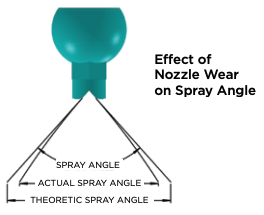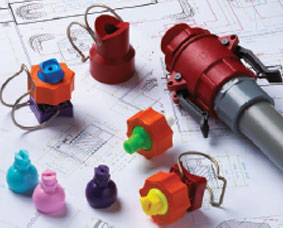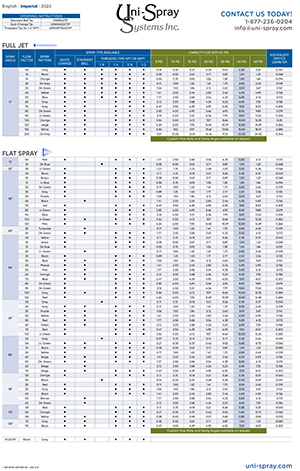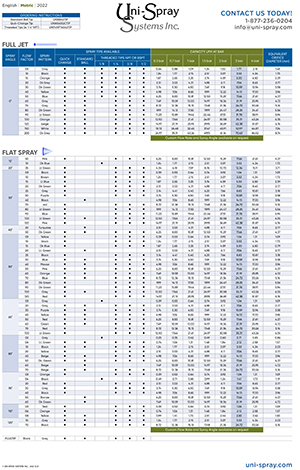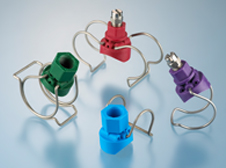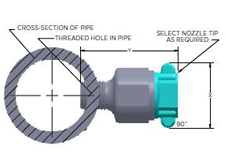Quick Change Nozzle Tips
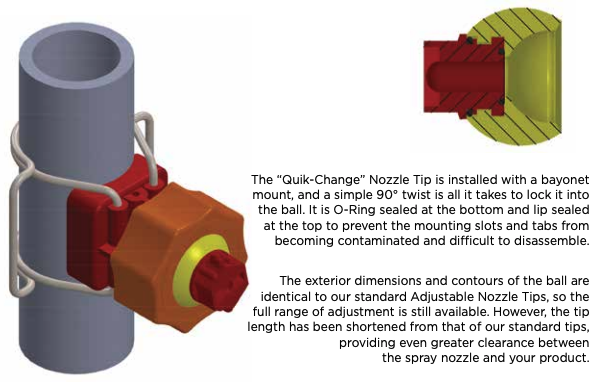
Spray Nozzle Components
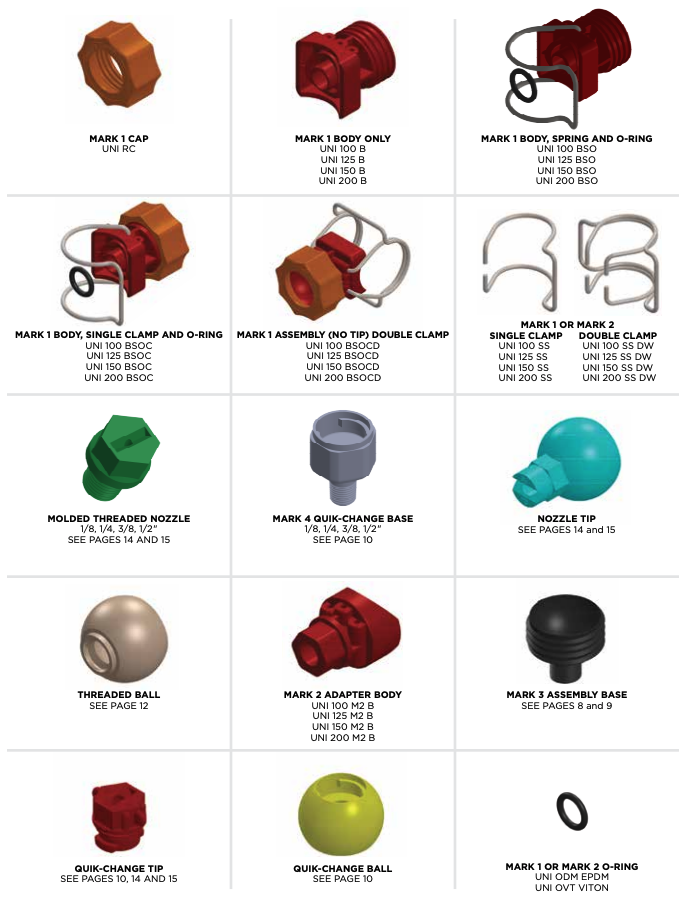
Technical Information
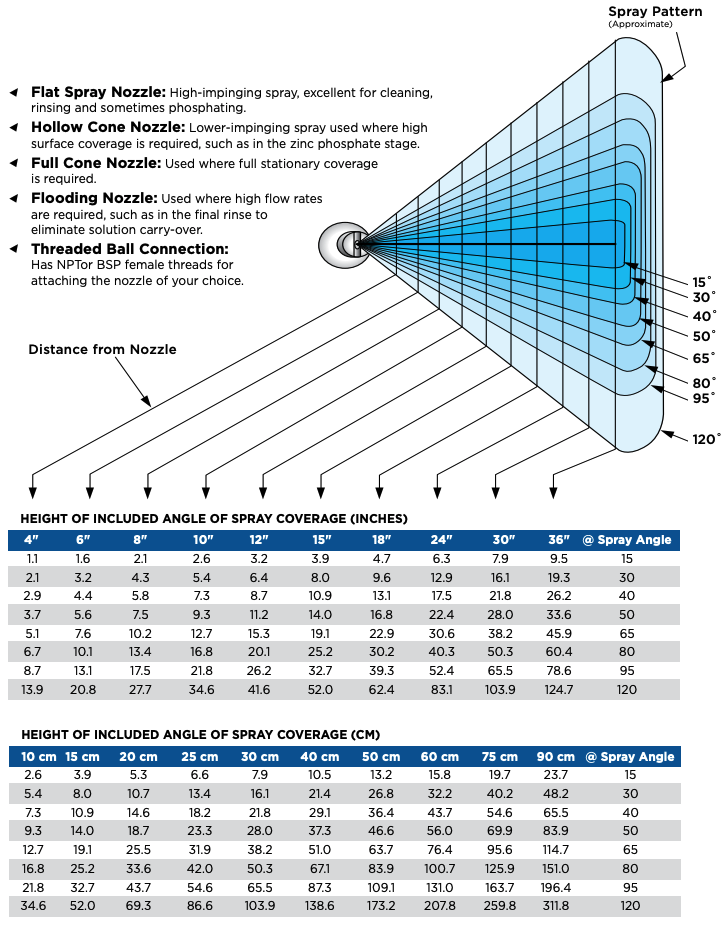
Injection Molded Threaded Nozzle Tips
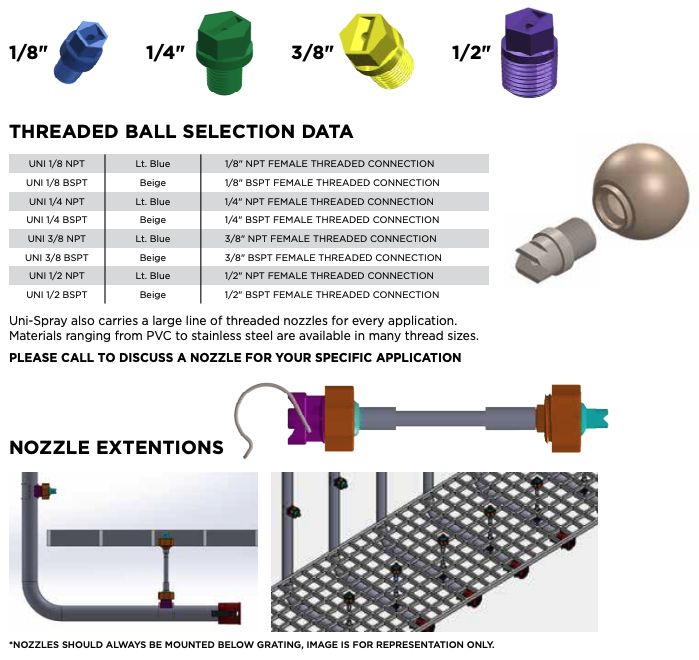
Nozzle Typle
In general, Full Cone Nozzles have the largest droplets, followed by Flat Spray Nozzles and Hollow Cone Nozzles. For a better description of the characteristics of various types of spray nozzles, refer to pages 2 and 10-12.
Flow Rate
If you select a nozzle with a greater flow rate at the same pressure, droplet size increases. For example, a UNI 6550 Flat Spray Nozzle at 40 psi and a flow rate of 5.0 will have a larger droplet size than a UNI 6540 Flat Spray Nozzle at 40 psi, which has a flow rate of only 4.0.
Pressure
As the pressure on any given nozzle increases, droplet size will decrease. For example, the same UNI 6550 Flat Spray Nozzle has a larger droplet size at 40 psi pressure than it does at 50 psi. Of the factors affecting flow rate, the most influential is pressure. Theoretically, flow rate varies in correlation with the square root of the pressure, neglecting all other factors. To compute pressures and flow rates other than those on pages 11, 13, and 14 the following formulas may be used:
As the pressure on any given nozzle increases, droplet size will decrease. For example, the same UNI 6550 Flat Spray Nozzle has a larger droplet size at 40 psi pressure than it does at 50 psi. Of the factors affecting flow rate, the most influential is pressure. Theoretically, flow rate varies in correlation with the square root of the pressure, neglecting all other factors. To compute pressures and flow rates other than those on pages 11, 13, and 14 the following formulas may be used:

Q1 and P1 are the known flow rate and pressure. Q2 is the resulting flow rate from the new pressure P2. P2 is the resulting pressure from the new flow rate Q2.
Temperature
Changing temperature can alter a liquid’s viscosity, surface tension, and specific gravity, and this in turn changes nozzle performance. Viscosity generally changes significantly with temperature. As the temperature drops, viscosity increases, which increases the energy required to form a spray, and also increases droplet size. The performance data supplied on pages 11, 14 and 15 is based on spraying water at room temperature. The lower the specific gravity of a fluid, the higher the flow rate through the nozzle at the same pressure, as shown in the following equation:

For example, the flow rate of a fluid with a specific gravity of 1.3 would be about 87% of the flow rate of water.

Increasing surface tension increases the effort required to atomize the spray, which increases the droplet size and reduces the spray angle.
Spray Angle
Increasing the spray angle will reduce the droplet size. For example, a UNI 6550 nozzle with a 65° spray angle and 5 gpm at 40 psi will have a finer droplet size than a UNI 5050 nozzle with a 50° spray angle at the same pressure and flow. At any given pressure and flow, the impact force or impingement of a spray will be increased by a narrower spray angle and, depending on your application, should be taken into account. Nozzle wear can also affect the spray angle. As nozzle wear increases, the orifice gets bigger, and flow rate increases, which in turn can result in a loss of system pressure. This loss of spray pressure can often be recognized by a narrowing of the spray pattern or by a general loss of uniformity in the spray pattern.
